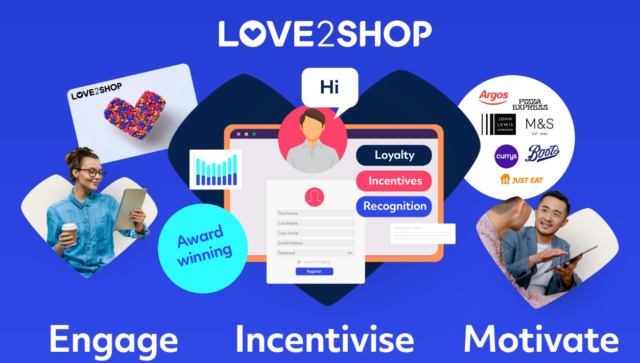October 17, 2025
Stop Asking Everything: The Employee Engagement Survey Questions That Matter Most

Plenty of companies listen to their employees. That’s not the problem. The issue is that they’re asking the wrong things.
You can run engagement surveys all year, gather mountains of feedback, and still not know why people feel drained or disconnected. The issue isn’t usually the survey itself; it’s the questions.
When employee engagement questions are too broad or sound detached from daily work, the answers come back flat. People stop believing anything will change.
That disbelief has a price. Gallup’s research shows that disengagement drains around $8.8 trillion from the global economy each year. Yet teams that are engaged see 23% higher profits and 43% less turnover.
Good employee engagement survey questions don’t just measure opinion; they expose reality. They show where people feel proud, stuck, or ready to go. Before you send another form around, pause. Ask if your questions invite honest reflection or fill another checkbox. The best ones hit a nerve – and that’s where real change starts.
Why the Employee Engagement Survey Questions You Ask Matter
Not every question deserves a box to tick. Some do more harm than good.
If every survey says people are “proud to work here” and “aligned with the mission,” but nothing actually moves, that’s your signal: you’re not asking the right questions. There’s a big difference between employees being “happy enough to stay” and actually being committed.
The right employee engagement questions dig below the surface. They uncover the patterns behind performance, retention, and trust – clarity, recognition, fairness, enablement, growth. When you ask well, the answers point straight to where energy is leaking or loyalty is fraying.
The wrong questions? They generate colorful dashboards and little else. They tell you what employees feel but not why. That gap between data and understanding is where action dies.
How to Craft Great Employee Engagement Survey Questions
Most people don’t mind being asked how they feel – it’s the endless forms that wear them down. If the survey’s too long or too abstract, they’ll stop trying. Vague questions, long scales, too many boxes to tick – all of it adds noise instead of insight. Sometimes, the shorter survey, the one that gets straight to the point, tells you far more.
If you really want insight:
- Tie each question to a goal: Every question should have a job to do. If it doesn’t point to a decision or a possible change, leave it out. A good employee engagement questionnaire tells you something you didn’t already know. It might uncover why people stay, where they struggle, or how connected they feel to the company’s direction.
- Keep questions clear and simple: Don’t cram two ideas into one sentence. “I’m satisfied with my pay and recognition” – which one are they answering? Split them up. Write like a human, not like a policy document. Short sentences land better.
- Protect anonymity: You can’t ask for honesty without offering safety. If people worry their answers could be traced back and used against them, they’ll hold back. Always keep responses anonymous and communicate what will happen next.
- Mix question types: Use open-ended and scale-based questions. Try combining one bigger annual survey with shorter check-ins. Too much of the same leads to survey fatigue.
Also, use tech to spot what you can’t see. Modern tools can sift through open comments, pick up tone, and flag themes you might overlook: frustration, optimism, burnout.
The Best Employee Engagement Survey Questions to Ask
There’s no single formula for an excellent survey. Every organization has its own rhythm and its own set of pressure points. But there are patterns; things that show up again and again when people talk honestly about work.
The following themes cover those patterns. Each set of employee engagement survey questions is designed to get under the surface, to move past “Are you happy here?” and toward “What really drives how you show up each day?”
Engagement Index Questions
Most companies start here. These are the questions that reveal the basics – pride, advocacy, and personal commitment. They tell you if people genuinely believe in the company or if they’re just coasting. Most of the time, they’re written as scale-based questions, such as:
- “I’m proud to work here.”
- “I’d recommend this company as a great place to work.”
- “I can see myself still working here two years from now.”
- “I feel motivated to give my best at work.”
It sounds simple, but these are your early signals, digging into things like eNPS and overall commitment. When people stop feeling proud, when they can’t see a future, that’s where disengagement starts.
Robidus found that implementing more continuous listening strategies and updating their focus on wellbeing led to an 11% increase in people saying they’d recommend working for the brand. Simple changes like that make all the difference when talent is scarce.
Employee Engagement Survey Questions on Leadership, Recognition & Alignment
When people talk about leaving a company, they rarely start with pay. They start with phrases like “I don’t feel heard,” or “leadership doesn’t walk the talk.” That’s what this theme explores: trust, honesty, and whether leaders mean what they say.
Example questions:
- I trust leaders to make fair, thoughtful decisions (scale)
- How do leaders to communicate? (look for themes on regularity, or honesty)
- I feel recognized when I do good work (scale)
- What values do leaders demonstrate?
- When major changes happen, I understand why (scale)
Everything filters down from leadership. Good communication and steady appreciation are what keep people connected to the bigger picture.
At Unifonic, a growing tech company, survey data came back with a pattern: people felt further from leadership than before. The business had doubled in size, but communication hadn’t kept up. Recognition felt uneven, and trust had started to slip.
Based on feedback, Unifonic started encouraging leaders to hold informal sessions, where anyone could ask about decisions and direction, and managers made a habit of calling out specific employees or teams. Six months later, engagement and trust scores were both up.
Enablement Questions: Tools, Tech & Development
Even the most driven person burns out when the basics fail. Old tools, slow systems, no room to learn – it all chips away at engagement. Enablement questions show whether people have what they need to do their jobs properly. Try asking:
- Do you have the tools and resources you need to do your work effectively?
- What resources would make your job easier?
- Do you have enough opportunities to develop new skills?
- My manager supports my learning and growth (scale)
- When’s the last time you saw leaders acting on feedback about resources?
Engagement isn’t only emotional. It’s practical. If the technology is slow, if people can’t access training or spend half the day fixing problems, they disengage. These employee engagement survey questions often uncover frustrations leaders overlook.
For example, at Tonkin + Taylor, an engineering consultancy, early surveys showed staff wanted better feedback and clearer paths for development. The company had strong values, but performance reviews felt formal and inconsistent.
In response, Tonkin + Taylor replaced annual reviews with lighter, ongoing check-ins. They also gave managers templates to help guide honest conversations about growth. A year later, 88% of staff were taking part in growth discussions. Feedback around fairness and usefulness had jumped sharply – proof that small changes can rebuild trust fast.
Employee Engagement Questions on Workflows & Productivity
Most frustration doesn’t come from the work itself. It comes from what gets in the way. Too many meetings. Confusing priorities. Systems that drag instead of help. You can’t fix engagement until you fix how the work actually happens.
These employee engagement questions focus on whether the day-to-day structure of work helps or hinders performance. Example questions:
- Do you feel your workload is reasonable most of the time?
- My deadlines and expectations are clear (scale)
- Do meetings and processes help you get things done, or slow you down? How would you adjust them?
- When priorities change, I’m given enough context to adjust (scale)
- I feel my workflow is tailored specifically to my needs (scale)
A lot of companies talk about burnout as if it’s a mystery, but it often comes down to design.
If people spend their days wrestling with bureaucracy or unclear expectations, the spark goes out. The link between effort and progress breaks.
At Stingray, a global media company, teams were delivering results but showing signs of fatigue. Feedback from early pulse surveys described frustration with meetings and unclear decision-making. The company responded by simplifying reporting lines and introducing short “focus hours” with no meetings. They also offered teams more control over when they worked, as long as goals were met.
Within months, the tone of responses shifted. Participation in surveys went up by 13 points, and the company’s eNPS hit 34.
Company Confidence & Future Outlook Questions
People don’t need nonstop good news. They just need to know where things are heading. When that direction disappears, engagement goes with it. These employee engagement survey questions are about that quiet sense of trust: do employees believe the company knows where it’s going? Ask:
- Where do you think this company is heading? Which goals can you see?
- I feel confident that this company has a strong future (scale)
- I trust leadership to make sound decisions about what’s next (scale)
- How do you think your work fits with the organization’s goals?
Confidence in the company’s direction shapes everything. When people understand where things are heading, even if the plan’s still forming, they stay engaged. When they don’t, they start to pull back. You can see it in tone, in meetings, in how people respond to change.
Questions on Communication, Collaboration & Relationships
Most problems at work come down to how people talk to each other. Or don’t.
You can have smart people, good tools, and a clear plan, but if information doesn’t move, nothing else works. These employee engagement survey questions look at how people actually connect day to day:
- I can be honest with my manager without worrying about it later (scale)
- How frequently do you collaborate with hybrid and remote workers?
- I feel isolated as a remote or hybrid worker (scale)
- Do you feel part of the decisions that touch your job?
- Do different departments share what’s happening, or do things get stuck?
When people stop talking, trust starts to leak away. That’s what employee engagement survey questions are really for – spotting the quiet before it turns into distance. During the pandemic, Kroger found staff didn’t want rehearsed updates; they just wanted the truth. Simple, real communication worked better than anything polished.
The company switched to short, plain updates and quick feedback loops. Fewer long memos. More real talk. It worked – people stayed calm and focused because they finally felt included.
Employee Engagement Survey Questions on Wellbeing & Psychological Safety
People can’t keep giving if the tank’s empty. Work’s always demanding; that’s fine. What breaks people is feeling unsafe or unseen. These employee engagement questions ask about that – whether people feel okay being human at work.
- I feel I can be my authentic self at work (scale)
- When’s the last time you spoke up about an issue, and what happened?
- I believe my company cares about my wellbeing (scale)
- When you’re stressed, how do you address the issue?
- How often have you experienced signs of burnout?
If people don’t feel safe, they shut down. You’ll still get answers in surveys, but they’ll be surface answers, polite and empty. Real engagement starts where honesty feels possible.
Questions on Work–Life Balance & Flexibility
When work eats up too much space, mentally, physically, and emotionally, engagement breaks. These employee engagement survey questions look at how people manage energy, not just time.
- How would you adjust your schedule given the chance?
- I feel I have enough flexibility to handle personal needs without stress (scale)
- I feel trusted to decide when and where I will work best (scale)
- I’m able to switch off at the end of the day (scale)
- What would improve your work-life balance?
Flexibility used to be a bonus. Now it’s part of how good work happens. When people can control their time, they think better, work cleaner, and stay calmer. Take that control away, and everything becomes a compromise – focus, family, sleep, health.
Questions about Rewards, Benefits & Financial Fit
Money isn’t the whole story, but it’s always part of it. If people feel underpaid or undervalued, engagement drops fast. These employee engagement questions get to how fair, secure, and supported people actually feel:
- What kind of benefits make a difference for you?
- I feel fairly paid for the work I do (scale)
- I understand how rewards, pay, and promotions are decided (scale)
- How often does exceptional work get noticed?
- Do you feel the company cares about your financial wellbeing? Why?
When pay feels unfair, trust erodes. It doesn’t matter how good the culture is; if people think the system’s rigged, they stop believing in it. If benefits don’t match real life, they start to feel cosmetic.
When Goldman Sachs asked staff what really mattered- things like family leave and flexible schedules – the answers shaped new policies. The result: stronger retention and higher productivity, built on benefits that made sense.
Employee Engagement Questions on Safety, Ethics & Social Responsibility
If employees stop believing the business acts fairly or responsibly, everything else loses weight. These employee engagement survey questions help you see if the organisation still feels safe and principled from the inside.
- Do you have any ethical concerns about how we do business?
- I’m proud of how this company behaves publicly (scale)
- I feel physically safe doing my job (scale)
- How would you say this company’s actions tie to ethical values?
People want to feel proud of where they work, what they do, and who they do it for, makes sense. When behavior and values stop matching, cynicism sets in. It’s quiet at first, but it spreads.
Using Responses to Employee Engagement Survey Questions
Gathering feedback’s easy. What you do with it decides if people ever answer again. Too many teams treat the survey as the end of the job instead of the start of one. You don’t need big plans, just curiosity, speed, and transparency.
Look for patterns, not points
Don’t get lost in decimals. You’re not trying to win a quiz; you’re trying to understand people. Sort your data by team, location, or tenure. Look for where scores dip or spike. Sometimes it’s a manager. Sometimes it’s workload. Sometimes it’s something invisible – trust, burnout, confusion.
Segmentation makes the difference. When PATH used Culture Amp’s heatmaps to track fairness and inclusion, they found small but clear gaps between groups. Once leaders saw the pattern, they acted. Fairness scores climbed five points. Equal opportunity went up, too.
Correlate engagement with outcomes
Engagement ties directly to performance, retention, and wellbeing. Watch how engagement scores line up with turnover, productivity, or customer ratings. If the teams with high trust also hit their goals faster, that’s not a coincidence, it’s a signal worth chasing.
Tools can help here. Some analytics platforms now connect employee engagement survey questions to KPIs like absenteeism or project delivery times. Start connecting people data to real decisions.
Close the loop fast
You don’t need a perfect plan. You just need to show you heard them. Within a week or two of survey results, publish a short “You said, we did” update. Even a few visible changes build credibility. Silence kills it.
When HLE, a tech services company, automated its analysis process with CultureMonkey, it cut review time from two months to six minutes. That speed meant leaders could respond in real time, before fatigue set in. Employees noticed, and engagement improved.
Turning Feedback into Momentum
Employee engagement isn’t about surveys. It’s about trust.
The questions you ask are just a way to prove you’re still listening. When people see that their answers lead to action the whole culture shifts. They start to believe again that speaking up matters. That’s the loop every organisation is trying to close: ask, listen, act, repeat.
A good employee engagement questionnaire doesn’t promise perfection. It promises honesty. Keep it simple:
- Ask questions that mean something.
- Respond faster than expected.
- Tell people what you changed because of what they said.
That’s it. That’s the work. You can measure engagement all day, but it only counts when it inspires action.



